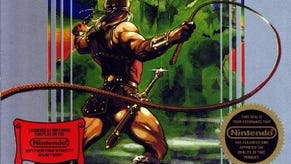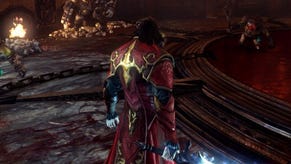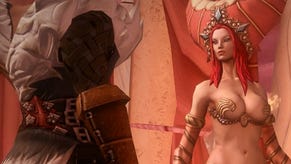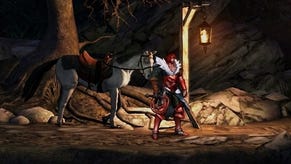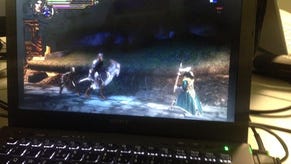Castlevania: Lords of Shadow - Mirror of Fate review
Right bat at you.
"An enormous structure has collapsed on top of me. Now I will never return home or know love from another."
Take note: when disaster struck in the middle ages - or whenever it is that Castlevania's meant to be set - people were generally rather stoical about it. Stranded by shipmates? Skewered by cursed arrows? Crushed by a tumbling wall? Time to bust out the pen and ink and write an even-handed little message about the whole affair.
Castlevania: Lords of Shadow - Mirror of Fate is filled with these sorts of missives. They're encountered every few minutes as you ramble around the dark corridors of a huge, terrifying stately pile where nasty things lurk in the rafters and there are block-pushing puzzles waiting down in the basement. The letters are a joy to come across, really. Even when they're doing little more than elaborating on the backstory, they offer the aftermath of intense violence or loss, picked over with the idle distance of someone describing why the number 7 from Margate failed to arrive in a timely fashion that morning. "I've been gored by a narwhal. How tiresome!"
Something else Mirror of Fate has taught me about the middle ages - or whenever - is that, back then, everybody was busy avenging somebody or something. 'Avenger' appears to have been the only occupation, really, beyond 'blacksmith' or perhaps 'troll'. No wonder so little got done. Throughout the latest Castlevania's dozen or so hours, you're dropped into the shoes of a selection of different Belmonts - Gabriel, Simon, [spoiler] and [even spoilier] - and all of them are out for some kind of bloodthirsty compensation. Revenge is the plot's defining concept - and its only real flavour, too.
And so, one by one, Gabriel's descendants go to a scary castle to sort out ancient evils, each getting their own act's worth of skeleton-bashing and ledge-grabbing. This simple narrative is told in a wonky non-linear fashion, a fact that has invited a couple of comparisons to head-trips such as Memento or Pulp Fiction. In truth, saying Mirror of Fate is a bit like Memento because it does funny things with the timeline is like arguing that Snow Buddies is similar to The Artist because they both have dogs in them. This is a dour tale, as befitting the foreboding setting, but it's also rather a bland and forgettable one.
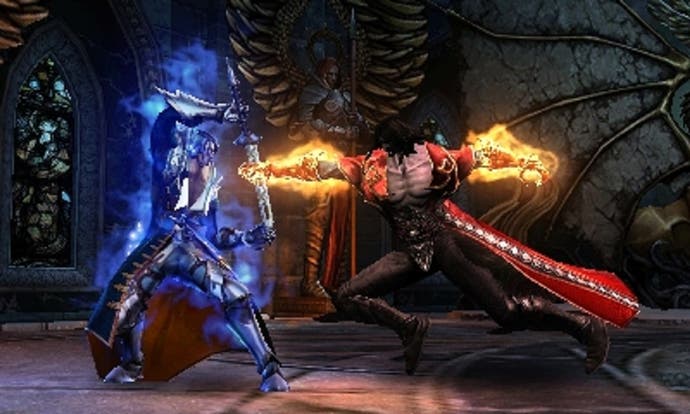
Story aside, after the 3D action-adventuring of the first Lords of Shadow, Mirror of Fate appears to suggest that developer MercurySteam is offering a more traditional Castlevania experience. It's set on a 2D plane and it sees you roaming a single, vast location, riding elevators, coming up against doors you can't open just yet and steadily collecting new skills, many of which have a this-is-probably-good-for-opening-doors kind of tang to them.
Initial impressions are a touch misleading, however. While your movement is in 2D, the levels are built from gloriously dainty 3D models and blessed with a surprisingly agile camera that's forever zipping in and out of the carnage. More importantly, although you're still piecing together a large castle map as you explore, the whole thing's been bitted - broken down into disconnected chunks - and there's almost no need to think about its overall structure for much of the adventure, or to pour over the schematics as you hunt for tantalising empty spaces.
There's little genuine Castlevania complexity on a moment-to-moment level, in other words, although the way in which the events taking place in the second act occasionally brush up against those unfolding in the first will give you a nice Back to the Future 2 twinge every now and then. There are one or two decent set-piece puzzles to work through and plenty of additional secrets to find, but if you're looking for a 2D Castlevania game from the old days - with that energising sense that the castle was a huge edifice built of Gothic tetrominoes and that you could almost imagining pulling the thing apart in your hands - you'll be disappointed.

So the focus lies with light traversal and combat instead of exploration. The former feels slightly fiddly and knock-kneed to begin with: ledges are a little too sticky to allow you to build up any kind of momentum as you move, while blocks need a tap of the shoulder button at the beginning and the end of the dragging process in order to unhand them, which is a very minor, very common problem in games, but feels indicative of a deeper messiness in the controls.
You'll settle into the staccato rhythm soon enough, however, and somewhere around the end of the first of three acts - there's also a short prologue - you'll be swinging from chandeliers with your combat cross quite comfortably and arm-over-arming it past sudden jets of steam as you navigate rope bridges. Double jumps quickly follow and, during the third act, you're granted a lovely dash move that allows you to leap massive crevices. That's all very pleasant, but the platforming's never quite top-notch: you're always a little too aware of the joins in the animation, the sluggish pace of movement and the lack of real weight.
Combat, meanwhile, is thuggishly satisfying. The move set is fairly generous to start with and you get a new skill every time you collect enough XP to level up, but the emphasis is on a likeably basic rhythm: learn to read the flashing lights coming from your opponents so you know when to lay on the damage with your chain attacks and when to dodge or even block. Time that last one right in certain situations and you have a chance to stun your foes, leaving them wide open for counters.
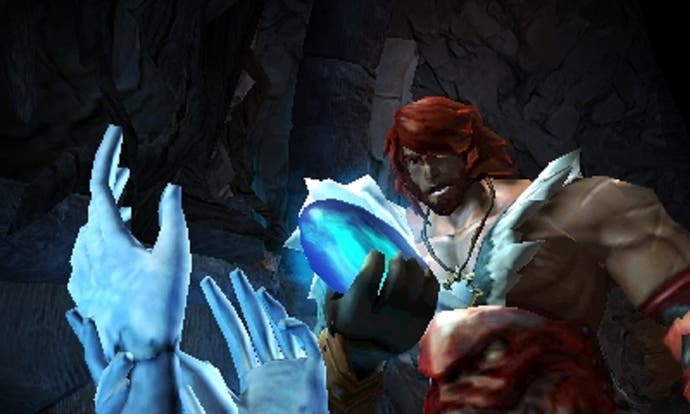
It's really satisfying to dance around the massed handfuls of monsters the game throws you up against, and while their behaviours tend to be fairly uninspired, each character you play as steadily builds their own repertoire of specific tricks that keep things fun. Simon can lob axes or oil flasks and conjure spirits to defend him from attacks or even return fire on his behalf, for example. Good old [Spoiler] can slow time, unleash showers of bats, zip through foes and even turn into a wolf, while the final act sees boomerangs and electrical bombs joined by a welcome return of Lords of Shadow's binary magic system, one strain of the good stuff allowing you to regain health while the other piles on additional violence.
The specific toys that Mirror of Fate's characters wield give each act its own peculiar tilt, even if the basics of the combat never really change. Bosses, meanwhile, slowly grow reliant on camera stunts (some of which, when coupled with the 3D effect, are really lovely) and QTEs (which generally aren't lovely at all). It's a reminder that, as fighting systems go, Castlevania's isn't particularly deep, but it is punchy and bluntly thrilling. Even when creativity fails, you've still got a beautiful game to look at, stereoscopic 3D working with the golden glow of torches to turn the gothic real estate into little pools of light, each one depicting an artful tumble of stones, a lofty crenellation or the antic zap and fizz of an ancient laboratory bubbling away in dormancy.
Stones, crenellations, laboratories! Castlevania, for all its moody horrors, has always been a comforting sort of experience, and while Mirror of Fate might willingly fumble the classic structure somewhat, it's still got a touch of that familiar vampire-hunting charm to it - a charm that comes to the rescue whenever the developer's invention or polish fall short. This 3DS outing can't match the smart assurance of the first Lords of Shadow, then, but it remains a decent action game with some lovely art to keep it chugging along. It's something of a makeweight, as handheld games far too frequently are - but there's just enough here to satisfy until the true follow-up to Lords of Shadows is ready.



